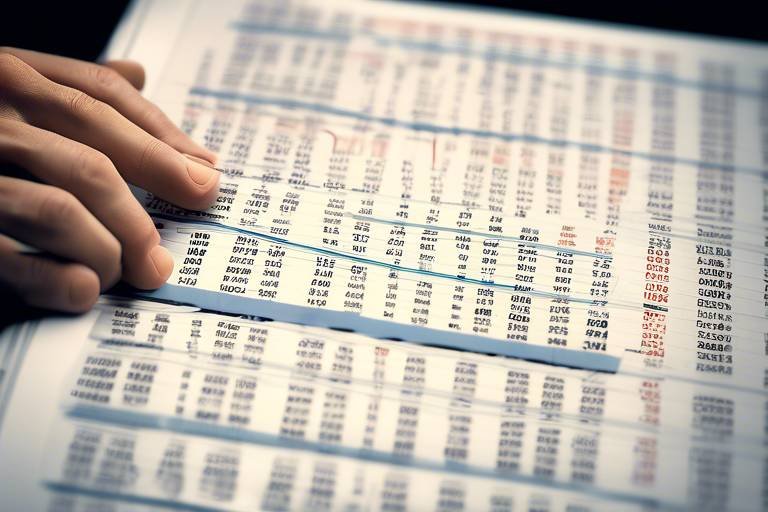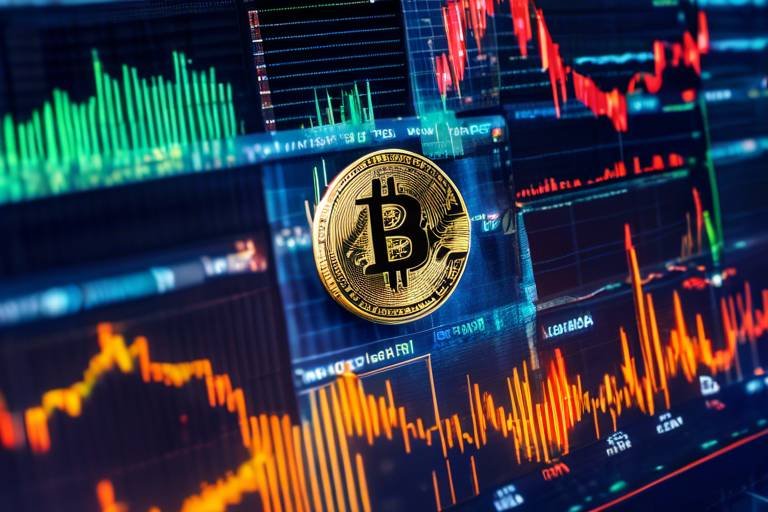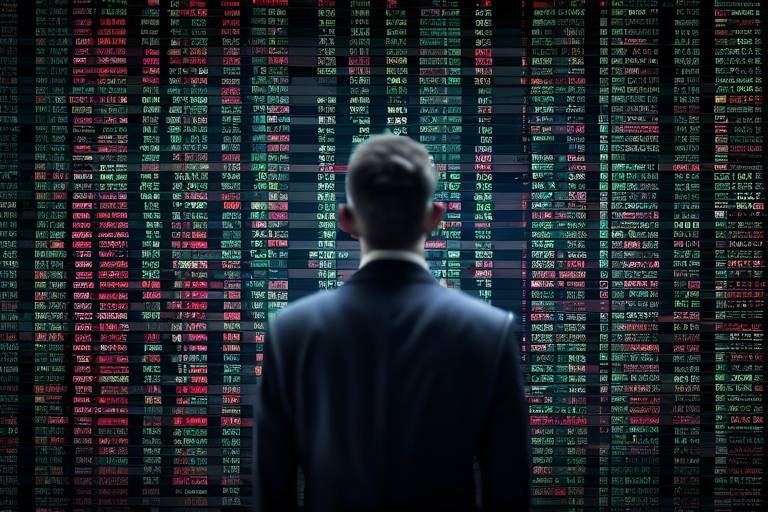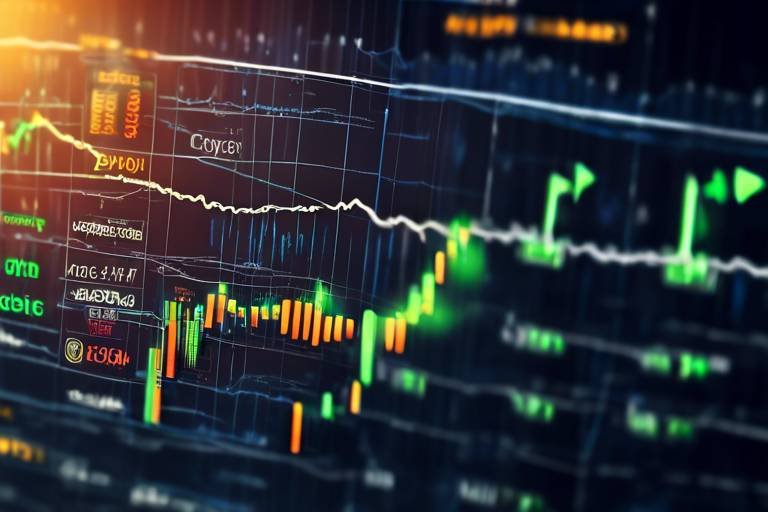Understanding the Market Makers in Crypto Trading
In the fast-paced world of cryptocurrency trading, market makers play an essential role that often goes unnoticed by the average trader. They are the unsung heroes of the trading ecosystem, ensuring that there is always a vibrant market for buyers and sellers alike. But what exactly does this mean? In simple terms, market makers are firms or individuals that provide liquidity to the market by consistently offering to buy and sell assets. This not only makes trading smoother but also helps in stabilizing prices and enhancing overall market efficiency. Think of them as the glue that holds the trading world together, ensuring that transactions happen seamlessly.
Imagine trying to buy a popular item during a sale, but there are no sellers in sight. Frustrating, right? That’s where market makers come in. They are like the store managers who ensure that there’s always enough stock available, allowing buyers to make purchases without delays. Without them, the market would be filled with gaps, leading to increased volatility and uncertainty. So, in essence, market makers are crucial for maintaining a healthy trading environment, and their influence extends far beyond just providing liquidity.
Market makers have a multifaceted role that encompasses various functions within the cryptocurrency markets. By acting as intermediaries between buyers and sellers, they ensure that trades are executed efficiently. When a trader places an order, market makers step in to match that order with a corresponding buy or sell order from another trader. This process not only facilitates smooth transactions but also helps to stabilize prices, preventing drastic fluctuations that could scare off potential investors.
In addition to matching orders, market makers also manage an order book, which is a comprehensive list of all buy and sell orders in the market. This allows them to quickly adjust prices based on supply and demand dynamics. When there’s a surge in buying interest, market makers can raise their sell prices to take advantage of the demand, and conversely, they can lower prices when selling pressure increases. This responsiveness is what keeps the market balanced and functioning efficiently.
The operation of market makers is not as simple as it may seem. They employ sophisticated algorithms and strategies to set prices, manage inventory, and respond to market fluctuations. This technology-driven approach allows them to react almost instantaneously to changes in the market, ensuring that they can provide liquidity at all times. For instance, they might use high-frequency trading techniques, which involve executing a large number of orders at incredibly fast speeds to capitalize on small price changes. This can lead to increased profitability while simultaneously benefiting the market by providing liquidity.
One of the primary functions of market makers is to provide liquidity, which is the ease with which assets can be bought or sold in the market without causing significant price changes. By consistently offering to buy and sell assets, market makers create a safety net for traders, ensuring that there’s always a market available. This not only reduces price volatility but also encourages more investors to participate in trading.
Market makers maintain an order book that lists all active buy and sell orders. This order book is crucial for their operations, as it allows them to quickly adjust prices based on real-time market demand. When a large buy order comes in, they can raise prices to reflect this demand, and when selling pressure increases, they can lower prices to attract buyers. This dynamic management of the order book is what enhances overall liquidity in the market.
To further stabilize prices, market makers utilize various techniques, such as quote stuffing and arbitrage. Quote stuffing involves placing a large number of buy and sell orders to create the illusion of high trading volume, which can help stabilize prices. Arbitrage, on the other hand, takes advantage of price discrepancies across different exchanges, allowing market makers to profit while also contributing to more efficient pricing across the crypto ecosystem.
Market makers have a significant influence on price movements through their trading activities. Their buying and selling can create or alleviate price pressure in the market. For example, if a market maker decides to sell a large quantity of a cryptocurrency, it can lead to a decrease in price due to increased supply. Conversely, if they start buying aggressively, it can push prices up due to heightened demand. This interplay between market makers and price movements is a vital aspect of trading dynamics that every trader should understand.
Market makers often exploit arbitrage opportunities that arise from price discrepancies across different exchanges. This practice not only allows them to maximize profits but also leads to more efficient pricing across the crypto ecosystem. By buying low on one exchange and selling high on another, they help to balance prices, making the market fairer for all participants.
By analyzing trading patterns and order flow, market makers can gauge market sentiment, which further informs their trading decisions and strategies. Understanding whether traders are feeling bullish or bearish can help market makers adjust their strategies accordingly, influencing market dynamics even more. This ability to read the market is akin to a seasoned captain navigating through turbulent waters, ensuring that their ship stays on course amidst the waves of trading activity.
- What is a market maker? - A market maker is an entity that provides liquidity by continuously buying and selling assets in the market.
- How do market makers affect prices? - They influence prices by adjusting their buy and sell orders based on market demand and supply, which can create or alleviate price pressure.
- What strategies do market makers use? - Market makers use various strategies, including high-frequency trading, arbitrage, and order book management to optimize their operations.
- Why are market makers important? - They ensure that there is always a market for assets, reduce price volatility, and enhance overall market efficiency.

The Role of Market Makers
In the bustling world of cryptocurrency trading, market makers play a pivotal role that often goes unnoticed by the average trader. They are the unsung heroes of the trading ecosystem, providing the essential liquidity that keeps the market flowing smoothly. Imagine a bustling marketplace where vendors are always ready to buy and sell; this is precisely how market makers function in the crypto arena. By facilitating trades, they ensure that buy and sell orders are matched efficiently, which not only stabilizes prices but also enhances overall market efficiency.
One of the primary functions of market makers is to provide a constant presence in the market. They do this by placing orders on both sides of the order book—buy orders at a lower price and sell orders at a higher price. This dual approach creates a buffer that absorbs fluctuations in demand and supply. Without market makers, the market could become chaotic, with prices swinging wildly due to a lack of available trades. Their presence helps to maintain a sense of order, allowing traders to execute their transactions with confidence.
Additionally, market makers are crucial in reducing price volatility. By consistently offering to buy and sell assets, they help to smooth out the erratic price movements that can occur in less liquid markets. Think of them as the stabilizers in a roller coaster ride; they ensure that the ups and downs are manageable, making the experience more enjoyable for everyone involved. This stability not only encourages more traders to participate but also fosters a healthier trading environment where investors feel secure in their transactions.
Furthermore, market makers utilize sophisticated algorithms and trading strategies to manage their operations effectively. These algorithms help them assess market conditions, set prices, and respond to fluctuations in real-time. This level of responsiveness is crucial in the fast-paced world of crypto trading, where every second counts. By employing advanced technology, market makers can react swiftly to market changes, ensuring that they can maintain liquidity even during periods of high volatility.
In summary, market makers serve as the backbone of the cryptocurrency market. Their ability to provide liquidity, stabilize prices, and respond to market dynamics is essential for creating a robust trading environment. Without them, the crypto market would likely face significant challenges, including increased volatility and decreased investor confidence. So, the next time you make a trade, take a moment to appreciate the market makers working behind the scenes to ensure that your transaction goes off without a hitch.

How Market Makers Operate
Market makers are the unsung heroes of the cryptocurrency trading world, operating behind the scenes to ensure that everything runs smoothly. They utilize sophisticated algorithms and strategies to set prices, manage inventory, and respond to market fluctuations. Imagine a bustling marketplace where vendors are constantly adjusting their prices based on supply and demand; that’s essentially what market makers do, but in the digital realm of cryptocurrencies. They play a crucial role in maintaining a balanced trading environment, ensuring that buyers and sellers can transact without significant delays.
To understand how market makers operate, it’s essential to look at their primary functions. They provide liquidity by consistently offering to buy and sell assets, which means that there’s always a market for traders. This consistent presence helps to reduce price volatility, making it easier for investors to enter and exit positions without causing dramatic price swings. Think of them as the lifeguards at a pool—always on duty to ensure that everyone can enjoy a safe swim without any unexpected waves.
Liquidity is the lifeblood of any trading market. Without it, prices can become erratic, and traders might struggle to execute their orders. Market makers step in as liquidity providers, ensuring that there are always enough buy and sell orders in the order book. They accomplish this by placing orders at various price levels, which allows them to quickly adjust their positions based on market demand. This proactive approach not only enhances market efficiency but also encourages investor participation, as traders feel more confident knowing they can easily buy or sell their assets.
One of the critical tools in a market maker's arsenal is the order book. This is a live ledger that lists all active buy and sell orders for a particular asset. Market makers continuously monitor this order book to identify trends and adjust their pricing strategies accordingly. By doing so, they can respond quickly to changes in market sentiment, ensuring that they remain competitive. For instance, if a market maker notices a surge in buy orders, they might raise their sell prices to capitalize on the increased demand. This dynamic adjustment helps maintain a healthy balance in the trading environment.
Market makers employ various techniques to stabilize prices and minimize the impact of large trades on the market. Some common methods include:
- Quote Stuffing: This involves placing a large number of buy or sell orders to create the illusion of demand or supply, which can influence other traders' perceptions.
- Arbitrage: Market makers exploit price discrepancies across different exchanges, buying low on one platform and selling high on another to stabilize prices across the board.
These techniques help to ensure that the market remains orderly, preventing any single trade from causing chaos. By managing the flow of orders and prices, market makers contribute significantly to the overall stability of the cryptocurrency ecosystem.
Different strategies, including high-frequency trading and spread trading, allow market makers to optimize their operations and maximize profits while providing liquidity. High-frequency trading involves executing a large number of orders at incredibly fast speeds, taking advantage of minute price changes. Spread trading, on the other hand, focuses on profiting from the difference between the buying and selling prices of an asset. By employing these strategies, market makers not only enhance their profitability but also contribute to the overall efficiency of the trading environment.

Liquidity Provision
In the bustling world of cryptocurrency trading, is a cornerstone that ensures the market operates smoothly. Imagine a busy marketplace where buyers and sellers come together, exchanging goods in real-time. Market makers act as the lifeblood of this exchange, stepping in to provide liquidity by consistently offering to buy and sell assets. This constant presence means that traders can enter and exit positions without the fear of being unable to find a counterparty for their trades.
By ensuring that there is always a market for various cryptocurrencies, market makers help to reduce price volatility. Think of it like a safety net; when a large trader attempts to sell a significant amount of a coin, market makers absorb some of that selling pressure, preventing drastic price drops. This stability is crucial for attracting more investors who might otherwise hesitate to enter a market perceived as too risky due to unpredictable price swings.
Moreover, the role of market makers extends beyond just providing a safety net. They actively engage in order book management, maintaining a detailed list of buy and sell orders. This allows them to adjust prices quickly in response to market demand. For instance, if a sudden surge of buyers appears, market makers can raise their sell prices to capitalize on the demand, thereby enhancing liquidity even further. The ability to respond swiftly to market changes is what differentiates successful market makers from the rest.
In addition to acting as a buffer against volatility, market makers utilize various price stabilization techniques. One common method is called quote stuffing, where they place a large number of orders that can create a perception of high activity in the market. This can deter other traders from making drastic moves, thereby maintaining a more stable price environment. Another technique is arbitrage, where market makers exploit price differences across different exchanges. By buying low on one exchange and selling high on another, they not only profit but also help align prices across the market, further enhancing overall liquidity.
To sum it up, liquidity provision by market makers is a vital aspect of the cryptocurrency ecosystem. They ensure that trading is efficient, stable, and accessible for everyone involved. Without their presence, the market would likely face significant challenges, including increased volatility and reduced participation from investors. As we delve deeper into the influence of market makers, it becomes clear that their role is not just about facilitating trades; it's about creating a thriving environment for all traders.
- What is a market maker? A market maker is a firm or individual that provides liquidity to the market by consistently buying and selling assets, thus ensuring that there are always buyers and sellers available.
- How do market makers stabilize prices? Market makers stabilize prices by absorbing large trades, adjusting their buy and sell orders based on market demand, and employing techniques such as arbitrage and quote stuffing.
- Why is liquidity important in crypto trading? Liquidity is crucial because it allows traders to enter and exit positions easily without causing significant price changes, thus reducing the risk associated with trading.

Order Book Management
Order book management is a cornerstone of how market makers operate in the cryptocurrency space. Imagine a bustling marketplace where goods are constantly being bought and sold; the order book is akin to the vendor's stall, displaying what is available and what is wanted. Market makers meticulously maintain this order book, which is a dynamic list of buy and sell orders for a particular asset. This management is crucial because it provides a real-time snapshot of market activity, helping to ensure that trades are executed swiftly and efficiently.
When a trader wants to buy or sell an asset, they place an order that gets added to the order book. Market makers, with their sophisticated algorithms, continuously monitor these orders and adjust their own buying and selling prices. This responsiveness is essential for maintaining liquidity in the market. If there are too many buy orders and not enough sell orders, prices may rise, prompting market makers to sell at a higher price to balance the market. Conversely, if sell orders outnumber buy orders, they may lower their prices to encourage buying activity.
In addition to simply matching buy and sell orders, market makers also have to consider various factors that can influence the order book. For instance, significant news events can cause sudden spikes in trading volume, leading to rapid changes in the order book. Market makers must be agile, ready to adapt their strategies to maintain equilibrium. They often employ techniques like quote stuffing, which involves placing a large number of orders at different prices to create the illusion of high activity, thereby influencing other traders' perceptions of market demand.
Furthermore, the order book's structure can significantly affect trading dynamics. A deeper order book, characterized by numerous buy and sell orders at different price levels, typically indicates a healthier market with lower volatility. On the other hand, a thin order book can lead to sharp price movements, as a single large order can disproportionately impact the price. Thus, market makers strive to maintain a balanced order book, ensuring that there is sufficient depth and breadth to accommodate trading activity without causing dramatic price swings.
To illustrate the importance of order book management, consider the following table that outlines the key elements involved:
| Element | Description |
|---|---|
| Buy Orders | Requests from traders looking to purchase an asset at a specific price. |
| Sell Orders | Requests from traders wanting to sell an asset at a specific price. |
| Order Depth | The number of buy and sell orders at various price levels. |
| Price Levels | The specific prices at which buy and sell orders are placed. |
In summary, effective order book management is vital for market makers as it not only facilitates trades but also helps stabilize prices and enhance market efficiency. By closely monitoring and adjusting their strategies based on the order book, market makers play a crucial role in creating a balanced trading environment, allowing traders to execute their orders with confidence. Without this management, the cryptocurrency market would likely experience greater volatility, making it a less attractive space for investors.
- What is an order book? An order book is a list of buy and sell orders for a specific asset, showing the prices and quantities available.
- How do market makers influence the order book? Market makers continuously adjust their buy and sell orders in the order book to maintain liquidity and stabilize prices.
- Why is order book depth important? A deeper order book indicates a healthier market with less volatility, as it can absorb larger trades without significant price changes.
- What techniques do market makers use for order book management? Techniques include quote stuffing and real-time price adjustments based on market conditions.

Price Stabilization Techniques
In the fast-paced world of cryptocurrency trading, where price fluctuations can be as wild as a rollercoaster ride, market makers play a pivotal role in implementing . These techniques are essential for ensuring that the market remains orderly and that prices do not swing wildly due to large trades or sudden market sentiment shifts. One of the primary methods employed by market makers is quote stuffing, where they place a large number of orders at various price levels to create the illusion of high liquidity. This can effectively dampen price movements by making it appear as though there are many buyers and sellers in the market, thus encouraging traders to enter or exit positions more confidently.
Another technique is arbitrage, which involves taking advantage of price discrepancies between different exchanges. For example, if Bitcoin is trading at $50,000 on Exchange A and $50,200 on Exchange B, a market maker can buy on Exchange A and sell on Exchange B, pocketing the difference. This activity not only benefits the market maker but also helps to align prices across platforms, contributing to overall market efficiency.
Additionally, market makers often utilize dynamic pricing strategies. By continuously adjusting their buy and sell orders based on real-time market data and trading volume, they can respond quickly to changes in demand. This responsiveness helps to absorb shocks caused by large trades, which might otherwise lead to significant price swings. For instance, if a large sell order is placed, a market maker might lower their buy price slightly to attract more buyers, thereby mitigating the downward pressure on the price.
Furthermore, market makers analyze the order book to manage their positions effectively. By observing the depth and spread of the order book, they can identify potential areas of support and resistance. This insight allows them to make informed decisions on when to enter or exit trades, further stabilizing prices. For example, if they notice a large number of buy orders at a particular price level, they might place their sell orders just above that level, anticipating that the price will not drop significantly below it.
To sum it up, the techniques employed by market makers are crucial for maintaining a stable trading environment in the cryptocurrency market. Their activities not only provide liquidity but also help to smooth out the inherent volatility associated with digital assets. By using methods like quote stuffing, arbitrage, dynamic pricing, and order book analysis, they ensure that traders can execute their orders with minimal disruption and that the market remains efficient.
- What is a market maker? A market maker is a firm or individual that provides liquidity to the market by continuously buying and selling assets, ensuring that there is a market for traders.
- How do market makers stabilize prices? Market makers stabilize prices through techniques such as quote stuffing, arbitrage, and dynamic pricing strategies, which help absorb shocks from large trades.
- Why are market makers important in crypto trading? They are crucial for maintaining liquidity and reducing price volatility, making it easier for traders to buy and sell assets without significant price fluctuations.
- Can market makers manipulate prices? While they can influence prices through their trading activities, market makers operate within regulatory frameworks and are generally focused on providing liquidity rather than manipulation.

Market Maker Strategies
When it comes to navigating the turbulent waters of cryptocurrency trading, market makers are like seasoned sailors, using a variety of strategies to ensure they stay afloat and profitable. Their primary goal? To provide liquidity while optimizing their operations. Let’s dive into some of the most common strategies they employ.
One of the most prevalent strategies is high-frequency trading (HFT). This method involves using complex algorithms to execute a large number of orders at incredibly fast speeds. Imagine a chef in a busy kitchen, flipping pancakes while keeping an eye on the oven timer; that’s how HFT works. By capitalizing on minute price discrepancies and executing trades in milliseconds, market makers can lock in profits that, while small on a per-trade basis, accumulate into substantial gains over time.
Another popular approach is spread trading. This strategy involves quoting both a buy price and a sell price for a particular asset, thus creating a spread. The market maker profits from the difference between these two prices. Think of it like a toll booth on a highway: every car that passes through pays a small fee, and over time, those fees add up. Spread trading allows market makers to earn consistent income while facilitating trades for other users.
Market makers also utilize arbitrage opportunities to enhance their profitability. This strategy involves taking advantage of price discrepancies for the same asset across different exchanges. For instance, if Bitcoin is trading for $50,000 on one exchange and $50,500 on another, a market maker can buy low and sell high, pocketing the difference. It’s akin to a savvy shopper who knows where to find the best deals and makes a profit by reselling items at a higher price.
Additionally, market makers engage in order book management. By maintaining a well-organized order book, they can quickly adjust their prices based on market demand. This is crucial because it allows them to respond to sudden market movements. Imagine a stock market floor bustling with traders; a market maker is the one who keeps the flow smooth, ensuring that buy and sell orders are matched efficiently.
Lastly, market sentiment analysis plays a significant role in shaping their strategies. By observing trading patterns and order flows, market makers can gauge how other traders feel about the market. This insight is invaluable, as it informs their trading decisions and helps them anticipate market movements. It’s similar to a weather forecaster reading the clouds; by understanding the current conditions, they can predict whether it will rain or shine.
In summary, the strategies employed by market makers are multifaceted and designed to create a balanced trading environment. From high-frequency trading to effective order book management, these tactics not only help market makers achieve profitability but also ensure that the cryptocurrency market remains liquid and efficient.
- What is a market maker? A market maker is a firm or individual that provides liquidity to the market by facilitating trades, ensuring that buy and sell orders are matched efficiently.
- How do market makers profit? Market makers profit primarily through the spread between buy and sell prices, as well as by exploiting arbitrage opportunities and engaging in high-frequency trading.
- Why are market makers important? They enhance market liquidity and stability, which encourages investor participation and reduces price volatility.
- Can market makers influence prices? Yes, their trading activities can create or alleviate price pressure in the market, significantly influencing price movements.

Impact on Price Movements
The influence of market makers on price movements in the cryptocurrency sphere is nothing short of fascinating. Imagine the market as a bustling marketplace, where buyers and sellers are constantly negotiating prices. Market makers act as the skilled negotiators, ensuring that transactions happen smoothly and efficiently. They play a pivotal role in shaping the prices of cryptocurrencies, and their actions can lead to significant fluctuations in market value. When a market maker decides to buy a large amount of a particular cryptocurrency, it can create upward pressure on the price, making it more attractive to other traders. Conversely, when they sell, it can lead to a drop in price, creating a ripple effect throughout the market.
One of the key ways market makers influence price movements is through their trading volume. Higher trading volumes often lead to increased liquidity, which helps to stabilize prices. This is crucial in the highly volatile world of cryptocurrencies, where prices can swing dramatically in a short period. By providing consistent buy and sell orders, market makers help to mitigate these wild price fluctuations, creating a more balanced trading environment.
Moreover, market makers are adept at identifying arbitrage opportunities. This occurs when there are price discrepancies for the same asset across different exchanges. For instance, if Bitcoin is trading for $50,000 on one exchange and $50,500 on another, a market maker can buy low and sell high, pocketing the difference. This not only benefits the market maker but also contributes to price normalization across exchanges, as their trades help to equalize the prices.
Market sentiment also plays a crucial role in price movements, and market makers are often at the forefront of analyzing this sentiment. By closely monitoring trading patterns and order flow, they can gauge the mood of the market. If they detect a growing interest in a particular cryptocurrency, they may adjust their trading strategies accordingly, further influencing price dynamics. For example, if a market maker notices a surge in buy orders for Ethereum, they might increase their buy orders to capitalize on the trend, which can push the price even higher.
In summary, market makers are essential players in the cryptocurrency market, and their operations have a profound impact on price movements. Through their liquidity provision, arbitrage strategies, and sentiment analysis, they help to stabilize prices and ensure that the market functions smoothly. Without them, the crypto landscape would likely be much more chaotic, with prices swinging wildly and creating uncertainty for traders.
- What is a market maker?
A market maker is a firm or individual that provides liquidity to the market by continuously buying and selling assets, ensuring that there is always a market for traders.
- How do market makers influence prices?
Market makers influence prices by executing large buy or sell orders, which can create upward or downward pressure on the asset's price.
- What are arbitrage opportunities?
Arbitrage opportunities arise when there are price discrepancies for the same asset across different exchanges, allowing market makers to profit from buying low and selling high.
- Why are market makers important in crypto trading?
They are crucial because they provide liquidity, stabilize prices, and help maintain an efficient market, making it easier for traders to buy and sell assets.

Arbitrage Opportunities
In the fast-paced world of cryptocurrency trading, serve as a beacon for savvy traders looking to capitalize on price discrepancies across different exchanges. Essentially, arbitrage involves buying an asset in one market where the price is lower and simultaneously selling it in another market where the price is higher. This practice not only allows traders to make a profit but also contributes to the overall efficiency of the market by aligning prices across various platforms.
Market makers play a pivotal role in this process. They are constantly monitoring multiple exchanges and utilizing sophisticated algorithms to identify these fleeting opportunities. For instance, if Bitcoin is trading at $40,000 on Exchange A and $40,500 on Exchange B, a market maker can buy Bitcoin on Exchange A and sell it on Exchange B, pocketing the $500 difference. This might seem straightforward, but the challenge lies in the speed and execution of these trades, as the window of opportunity can close in a matter of seconds.
To illustrate the concept further, let’s consider a simple example:
| Exchange | Price of Bitcoin (BTC) |
|---|---|
| Exchange A | $40,000 |
| Exchange B | $40,500 |
In this scenario, the market maker could execute the following steps:
- Buy 1 BTC on Exchange A for $40,000.
- Sell 1 BTC on Exchange B for $40,500.
- Profit $40,500 - $40,000 $500.
However, it’s important to note that arbitrage isn't without its risks. Transaction fees, withdrawal limits, and the time it takes to execute trades can eat into profits. Additionally, the crypto market is notoriously volatile, meaning prices can change rapidly, potentially turning a profitable trade into a loss if not executed swiftly. Market makers must continuously adapt their strategies to mitigate these risks while taking advantage of arbitrage opportunities.
Moreover, the presence of market makers helps to reduce the occurrence of significant price discrepancies. By actively trading and providing liquidity, they ensure that prices across various exchanges remain relatively aligned. This not only benefits traders looking for arbitrage opportunities but also contributes to the overall health and stability of the cryptocurrency market.
In conclusion, arbitrage opportunities represent a fascinating aspect of crypto trading, driven largely by the actions of market makers. As they navigate the complexities of multiple exchanges, they help to create a more efficient market, ultimately benefiting all participants involved. So, the next time you hear about arbitrage in the crypto space, remember the crucial role that market makers play in making those opportunities possible!
1. What is arbitrage in cryptocurrency?
Arbitrage in cryptocurrency refers to the practice of buying an asset on one exchange at a lower price and selling it on another exchange at a higher price, thus making a profit from the price difference.
2. How do market makers contribute to arbitrage opportunities?
Market makers continuously monitor prices across different exchanges and facilitate trades, which helps align prices and creates opportunities for arbitrage.
3. What are the risks associated with arbitrage trading?
Risks include transaction fees, market volatility, and execution delays that can diminish or eliminate potential profits.
4. Can anyone participate in arbitrage trading?
Yes, anyone with access to multiple exchanges can participate in arbitrage trading, but it requires quick decision-making and an understanding of market dynamics.

Market Sentiment Analysis
Market sentiment analysis is a critical component in the toolkit of market makers, as it provides insights into the overall mood of the market participants. By understanding whether traders are feeling bullish or bearish, market makers can adjust their strategies accordingly. Think of market sentiment as the weather forecast for the trading world; just as a storm can change your plans for a picnic, shifting sentiments can drastically impact trading strategies.
One way market makers gauge sentiment is by analyzing trading patterns and order flow. When they notice a surge in buy orders, it might indicate that traders are feeling optimistic about a particular asset. Conversely, a spike in sell orders could suggest that fear is creeping in. This analysis isn't just about numbers; it's about understanding the psychology behind those numbers. After all, in the world of crypto, emotions can often drive market movements more than fundamentals.
To provide a clearer picture, let’s consider some key indicators that market makers often look at for sentiment analysis:
- Volume Trends: High trading volumes can indicate strong sentiment, whether bullish or bearish.
- Order Book Depth: A deeper order book with more buy orders can signal bullish sentiment, while a deeper sell side may indicate bearish trends.
- Social Media Sentiment: Platforms like Twitter and Reddit can provide real-time insights into what retail investors are thinking.
Market makers also employ sophisticated algorithms to analyze this data in real-time, allowing them to react quickly to changing conditions. Imagine a seasoned sailor adjusting their sails based on the wind's direction; similarly, market makers fine-tune their strategies based on the sentiment they detect. This responsiveness not only helps them manage their own risk but also contributes to overall market stability.
In addition, market sentiment can be influenced by external factors such as news events, regulatory changes, or even macroeconomic indicators. For instance, if a major exchange announces a security breach, you can bet that sentiment will shift rapidly towards fear, prompting market makers to adjust their positions. They must stay alert and ready to adapt, much like a chess player anticipating their opponent's next move.
Ultimately, the ability to analyze market sentiment effectively allows market makers to enhance liquidity and stabilize prices. By understanding the collective feelings of traders, they can make informed decisions that benefit not just themselves but the entire trading ecosystem. This analysis is more than just a tool; it's a vital part of the strategy that keeps the crypto market dynamic and engaging.
Here are some common questions regarding market makers and their role in cryptocurrency trading:
- What is a market maker? A market maker is a firm or individual that provides liquidity to the market by consistently buying and selling assets, helping to stabilize prices.
- How do market makers influence price movements? Market makers can create or alleviate price pressure through their trading activities, which can lead to significant price fluctuations.
- What strategies do market makers use? Market makers utilize various strategies, including high-frequency trading and arbitrage, to optimize their operations and maximize profits.
- Why is liquidity important in crypto trading? Liquidity ensures that there is always a market for traders, reducing price volatility and encouraging more participants to engage in trading.
Frequently Asked Questions
- What are market makers in crypto trading?
Market makers are entities or individuals that provide liquidity to the cryptocurrency markets by facilitating buy and sell orders. They ensure that there are always available trades, which helps to stabilize prices and enhance market efficiency.
- How do market makers influence price movements?
Market makers can significantly impact price movements through their trading activities. Their buying and selling can create or alleviate price pressure, leading to fluctuations in market prices. Essentially, they act as a stabilizing force in the often volatile crypto market.
- What strategies do market makers use?
Market makers utilize various strategies such as high-frequency trading and spread trading to optimize their operations. These strategies allow them to manage inventory effectively, respond to market fluctuations, and maximize profits while ensuring liquidity.
- What is liquidity provision?
Liquidity provision refers to the process by which market makers consistently offer to buy and sell assets. This ensures that there is always a market for traders, which helps reduce price volatility and encourages more investors to participate in the market.
- What is an order book and how do market makers manage it?
An order book is a list that displays all the buy and sell orders for a particular asset. Market makers maintain this order book to quickly adjust prices and respond to market demand, thereby enhancing overall market liquidity.
- Can market makers create arbitrage opportunities?
Yes, market makers often exploit price discrepancies across different exchanges to create arbitrage opportunities. This practice helps lead to more efficient pricing across the crypto ecosystem, benefiting all traders.
- How do market makers analyze market sentiment?
Market makers gauge market sentiment by analyzing trading patterns and order flow. This information helps them inform their trading decisions and strategies, which can further influence market dynamics.



















